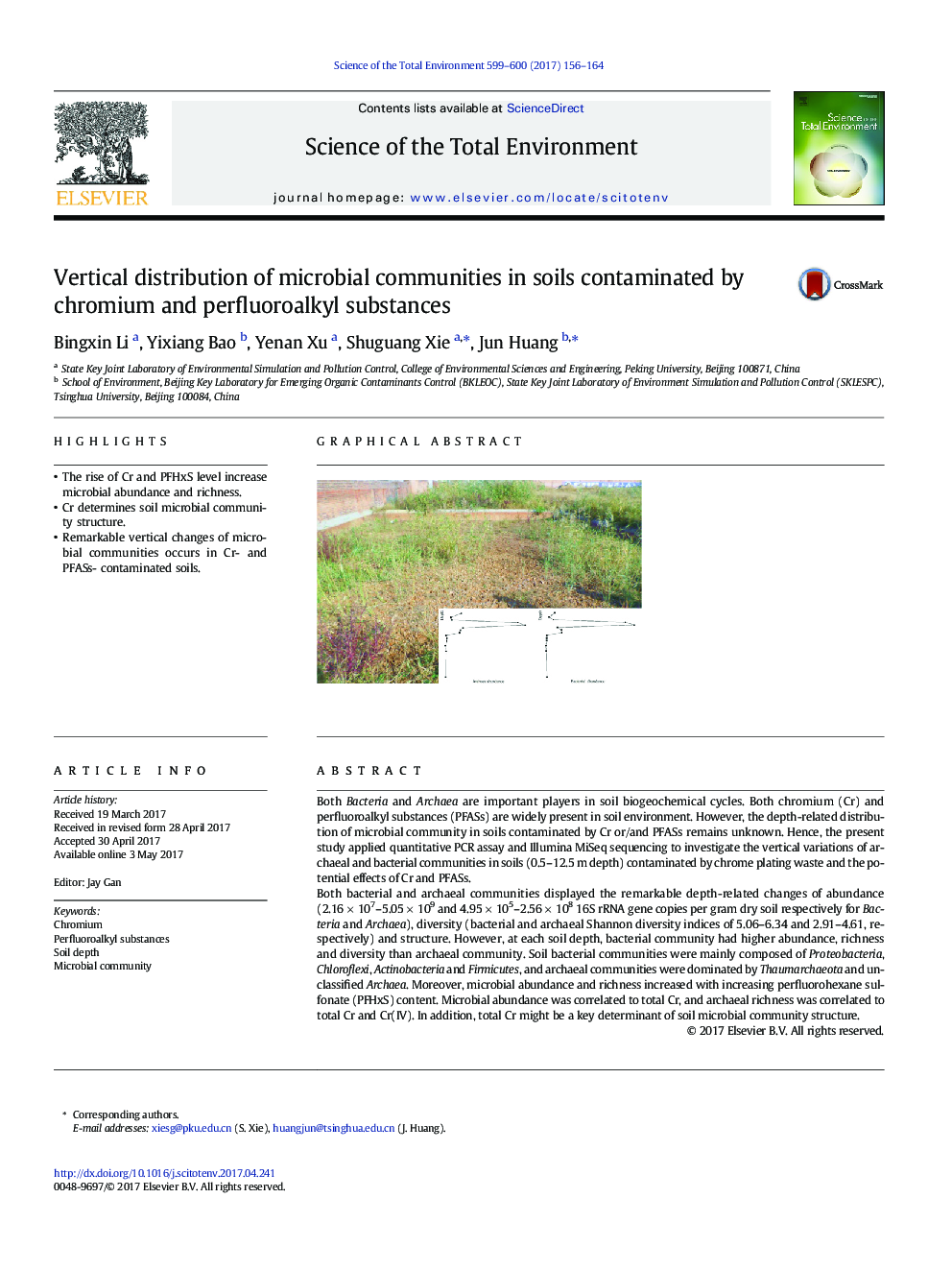| Article ID | Journal | Published Year | Pages | File Type |
|---|---|---|---|---|
| 5750480 | Science of The Total Environment | 2017 | 9 Pages |
â¢The rise of Cr and PFHxS level increase microbial abundance and richness.â¢Cr determines soil microbial community structure.â¢Remarkable vertical changes of microbial communities occurs in Cr- and PFASs- contaminated soils.
Both Bacteria and Archaea are important players in soil biogeochemical cycles. Both chromium (Cr) and perfluoroalkyl substances (PFASs) are widely present in soil environment. However, the depth-related distribution of microbial community in soils contaminated by Cr or/and PFASs remains unknown. Hence, the present study applied quantitative PCR assay and Illumina MiSeq sequencing to investigate the vertical variations of archaeal and bacterial communities in soils (0.5-12.5Â m depth) contaminated by chrome plating waste and the potential effects of Cr and PFASs.Both bacterial and archaeal communities displayed the remarkable depth-related changes of abundance (2.16Â ÃÂ 107-5.05Â ÃÂ 109 and 4.95Â ÃÂ 105-2.56Â ÃÂ 108 16S rRNA gene copies per gram dry soil respectively for Bacteria and Archaea), diversity (bacterial and archaeal Shannon diversity indices of 5.06-6.34 and 2.91-4.61, respectively) and structure. However, at each soil depth, bacterial community had higher abundance, richness and diversity than archaeal community. Soil bacterial communities were mainly composed of Proteobacteria, Chloroflexi, Actinobacteria and Firmicutes, and archaeal communities were dominated by Thaumarchaeota and unclassified Archaea. Moreover, microbial abundance and richness increased with increasing perfluorohexane sulfonate (PFHxS) content. Microbial abundance was correlated to total Cr, and archaeal richness was correlated to total Cr and Cr(IV). In addition, total Cr might be a key determinant of soil microbial community structure.
Graphical abstractDownload high-res image (331KB)Download full-size image
